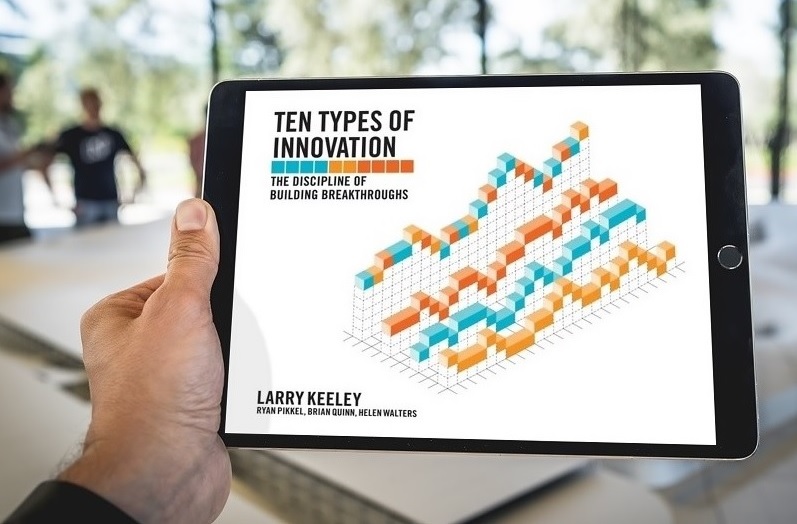10 Types of Innovation: The Discipline of Building Breakthroughs by Larry Keeley, Helen Walters, and Ryan Pikkel.
The book argues that there are 10 distinct types of innovation that can be used to create breakthrough products, services, and business models. These 10 types are:
- ✔️ Profit model innovation: This is about finding new ways to make money from your offering. For example, Netflix’s profit model innovation was to charge a monthly subscription fee instead of renting DVDs by the day.
- ✔️ Network innovation: This is about creating new ways to connect with customers, partners, or suppliers. For example, Uber’s network innovation was to create a marketplace for connecting drivers with passengers.
- ✔️ Structure innovation: This is about changing the way your organization is set up. For example, Spotify’s structure innovation was to create a decentralized organization with autonomous teams.
- ✔️ Process innovation: This is about finding new ways to do things more efficiently or effectively. For example, Amazon’s process innovation was to create a system for automating the order fulfillment process.
More: Generative AI, Innovation Management & Book AI Speaker Tony de Bree
- ✔️ Product performance innovation: This is about making your offering better, faster, or cheaper. For example, Dyson’s product performance innovation was to create a vacuum cleaner that was more powerful and efficient than anything else on the market.
- ✔️ Product system innovation: This is about creating new ways to combine products and services. For example, Apple’s product system innovation was to create the iPhone, which combined a phone, a music player, and a camera into one device.
- ✔️ Service innovation: This is about finding new ways to improve the customer experience. For example, Airbnb’s service innovation was to create a platform for people to rent out their homes to travelers.
- ✔️ Channel innovation: This is about finding new ways to reach customers. For example, Red Bull’s channel innovation was to create a sponsorship program that helped them reach a global audience.
- ✔️ Brand innovation: This is about creating a strong and memorable brand that customers can relate to. For example, Nike’s brand innovation was to create a brand that was associated with athleticism and success.
- ✔️ Customer engagement innovation: This is about finding new ways to interact with customers and build relationships with them. For example, Starbucks’ customer engagement innovation was to create a warm and inviting atmosphere that made customers feel welcome.
The book argues that these 10 types of innovation can be used to create breakthrough products, services, and business models. However, it is important to note that not all of these types of innovation are equally important. The most important type of innovation will vary depending on the industry and the specific situation.
The book also provides a framework for evaluating and selecting the right types of innovation for your organization. This framework includes the following steps:
- 1. Identify the problem or opportunity: The first step is to identify the problem or opportunity that you are trying to address with innovation.
- 2. Understand the customer: The second step is to understand your customers and what they value.
- 3. Explore the possibilities: The third step is to explore the different types of innovation that could be used to address the problem or opportunity.
- 4. Select the right types of innovation: The fourth step is to select the right types of innovation based on your goals and resources.
- 5. Implement the innovation: The fifth step is to implement the innovation and measure its impact.
The book concludes by arguing that innovation is not a one-time event. It is a continuous process that requires organizations to be constantly looking for new ways to improve.
It is a great book, but it is a bit outdated. Why? 1) Because it is a so-called ‘inside-out model’. It takes a traditional value chain approach instead of the outside-in approach in tools like the AI-Model canvas. 2) There is a focus on different types of innovation, but not with a holistic approach for digital transformation of change management for instance as is the case agin in the AI-Model Canvas.
Make an appointment.
Make a quick phone call if you want to learn quickly A la carte online or in-company how you can make your company AI-Powered with a new AI-Powered business model including an aligned AI-Powered organizational design and aligned AI-Powered business ecosystem with the AI-Model Canvas. Call me now on 06-3487806 or even better, what’s app me first, okay? Then we will speak directly.
You can also send me an email here or a pm via LinkedIn if you prefer.
Later.
Tony de Bree

